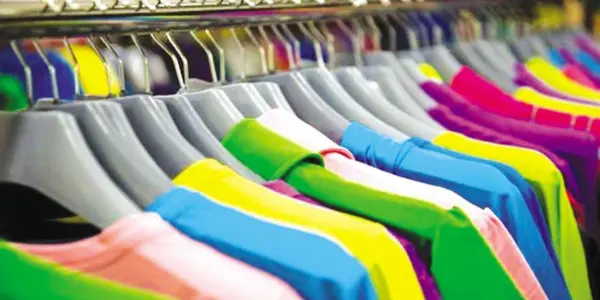Explore comprehensive insights and data on the Garment Buying House Market Analysis. Discover trends, challenges, and opportunities shaping the industry. Our detailed analysis provides valuable information for industry professionals seeking to understand market dynamics, consumer behavior, and competitive strategies. Stay ahead with expert knowledge and actionable insights to make informed decisions in the garment buying house sector.

1. Understanding the Garment Buying House Sector
A Garment Buying House acts as an intermediary between apparel manufacturers and retailers. These entities manage the procurement of garments, ensuring quality, compliance with specifications, and timely delivery. They handle everything from product sourcing and quality control to logistics and supplier management.
2. Market Trends
2.1. Increasing Demand for Sustainability
In recent years, there has been a significant shift towards sustainable fashion. Consumers and retailers alike are demanding eco-friendly practices and products. Garment buying houses are adapting by sourcing from sustainable manufacturers, integrating ethical practices, and offering sustainable product lines. This trend is driven by growing awareness of environmental issues and the push for corporate responsibility.
2.2. Technological Advancements
The integration of technology in the garment industry is revolutionizing the buying process. From digital sampling and virtual showrooms to automated supply chain management, technology is enhancing efficiency and accuracy. Garment buying houses are leveraging these advancements to streamline operations, reduce costs, and improve the overall quality of their offerings.
2.3. Shift Towards Online Platforms
The rise of e-commerce and online platforms has transformed the traditional garment buying process. Retailers and buying houses are increasingly engaging in online transactions, utilizing B2B platforms for sourcing and procurement. This shift provides greater transparency, flexibility, and access to a global market.
3. Competitive Landscape; Garment Buying House Market Analysis
3.1. Major Players
The garment buying house market is characterized by a mix of large multinational companies and specialized boutique firms. Major players often have extensive networks and significant bargaining power, allowing them to negotiate favorable terms with manufacturers and retailers. Smaller firms, on the other hand, may offer niche expertise and personalized services.
3.2. Key Competitors
Key competitors in the garment buying house sector include companies with strong global presence and reputation. These entities leverage their established relationships with manufacturers and retailers to secure competitive advantages. Additionally, the rise of local and regional players is creating a more fragmented competitive landscape, offering diverse options for buyers.
4. Consumer Behavior
4.1. Evolving Preferences
Consumer preferences are rapidly evolving, influenced by factors such as fashion trends, price sensitivity, and ethical considerations. Garment buying houses must stay attuned to these changes to effectively meet the demands of both retailers and end consumers. Understanding shifting preferences and trends helps in curating product offerings that resonate with the market.
4.2. Importance of Quality and Transparency
Quality and transparency are becoming increasingly important to consumers. Buyers are seeking assurance regarding the quality of products and the ethical practices of manufacturers. Garment buying houses are responding by implementing rigorous quality control measures and providing transparent information about the sourcing and production processes.
5. Challenges in the Market
5.1. Supply Chain Disruptions
The global garment industry faces numerous challenges, including supply chain disruptions caused by geopolitical tensions, natural disasters, and pandemics. Garment buying houses must develop strategies to mitigate these risks, such as diversifying suppliers, building robust contingency plans, and investing in supply chain resilience.
5.2. Regulatory Compliance
Adherence to regulatory standards is critical in the garment industry. Compliance with various regulations related to labor practices, environmental standards, and product safety is essential for maintaining credibility and avoiding legal issues. Garment buying houses must stay informed about regulatory changes and ensure that their practices align with these requirements.
6. Future Outlook
6.1. Growth Opportunities
The garment buying house sector is poised for growth, driven by increasing demand for customized solutions, sustainable products, and technological innovations. Expanding into emerging markets and exploring new business models can create additional revenue streams and enhance market presence.
6.2. Strategic Recommendations
To stay competitive, garment buying houses should focus on:
- Leveraging technology for operational efficiency and enhanced customer experience.
- Investing in sustainability to meet evolving consumer expectations and regulatory demands.
- Building strong relationships with manufacturers and retailers to secure competitive advantages.
Conclusion
The garment buying house market is evolving rapidly, influenced by trends in sustainability, technology, and consumer behavior. By understanding these trends and addressing the associated challenges, garment buying houses can position themselves for success in an increasingly competitive landscape. Embracing innovation, maintaining high standards of quality and transparency, and adapting to market demands will be key to thriving in this dynamic industry.

You must be logged in to post a comment.